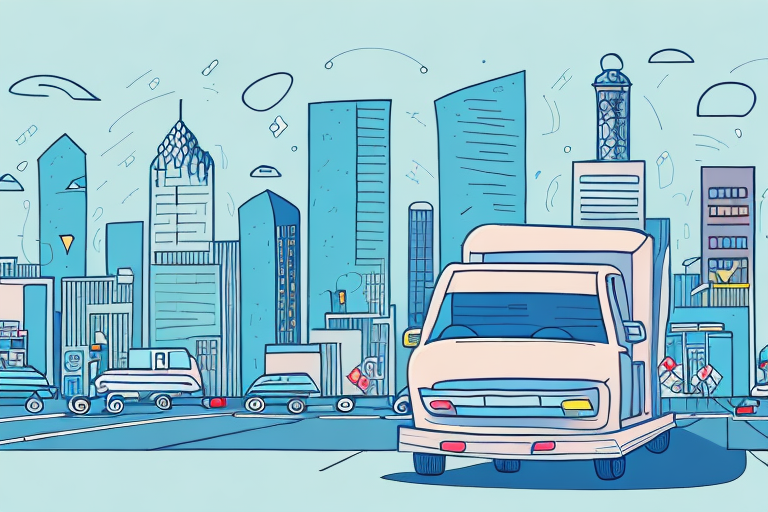Why the Delivery Service Industry is Booming
The delivery service industry has experienced significant growth in recent years, primarily driven by the surge in e-commerce. With more consumers opting for online shopping, the demand for efficient and reliable delivery services has skyrocketed. The COVID-19 pandemic further accelerated this trend, as lockdowns and social distancing measures led to an unprecedented increase in online orders.
Additionally, the rise of same-day and next-day delivery options has reshaped customer expectations. Companies like Amazon, FedEx, and UPS are continuously expanding their delivery networks to meet the heightened demand. Innovations such as drone deliveries and autonomous vehicles are also being explored to enhance efficiency and reduce delivery times.
Essential Qualities and Skills for Successful Delivery Drivers
Reliability and Responsibility
Successful delivery drivers must be dependable, ensuring that packages are delivered on time and in good condition. Employers rely on drivers to uphold the company's reputation through consistent performance.
Organizational Skills
Managing multiple deliveries requires excellent organizational abilities. Drivers must efficiently plan their routes, keep track of packages, and handle any logistical challenges that arise.
Communication Skills
Effective communication with customers and supervisors is crucial. Drivers often need to provide updates, address concerns, and resolve issues promptly.
Technical Proficiency
With the integration of technology in delivery operations, drivers should be comfortable using GPS systems, delivery apps, and other digital tools to optimize their routes and manage deliveries.
Types of Delivery Service Jobs and Choosing the Right Company
Various Delivery Roles
- Package Delivery Drivers: Focus on delivering parcels from warehouses to customers.
- Courier Drivers: Handle time-sensitive deliveries, often within a city or metropolitan area.
- Medical Equipment Delivery Drivers: Specialize in transporting medical supplies and equipment, requiring specific knowledge and handling procedures.
- Food Delivery Drivers: Deliver meals from restaurants to customers, often involving interactions in high-paced environments.
Choosing the Right Company
When selecting a delivery service company to work for, consider factors such as pay rates, benefits, job stability, and company culture. Researching employee reviews on platforms like Glassdoor can provide valuable insights into what it's like to work for a particular company.
Requirements and Steps to Become a Delivery Driver
Basic Requirements
- Minimum age of 18 years.
- Valid driver's license.
- Clean driving record.
- Ability to pass background checks and drug tests.
Obtaining a Commercial Driver’s License (CDL)
For certain delivery roles, especially those involving larger vehicles, a CDL is required. The process typically involves:
- Passing a written knowledge test.
- Undergoing a skills test, including vehicle operation.
- Completing any required training programs.
More information can be found on the Federal Motor Carrier Safety Administration website.
Training and Certification
Many companies offer training programs that cover essential topics such as safety regulations, efficient routing, and customer service. Completing these programs can enhance your qualifications and job performance.
Navigating the Job: Interviews, First Day, and Daily Operations
Acing the Job Interview
- Prepare: Research the company and understand its delivery processes.
- Highlight Relevant Skills: Emphasize your organizational and customer service abilities.
- Ask Thoughtful Questions: Inquire about training, company culture, and advancement opportunities.
Your First Day on the Job
Expect to undergo orientation where you'll learn about company policies, routes, and the tools you'll be using. It's essential to stay attentive, ask questions, and apply the training you've received to ensure a smooth start.
Daily Operations
Daily tasks typically include:
- Planning and following delivery routes.
- Loading and unloading packages.
- Using handheld devices to track deliveries.
- Communicating with dispatchers and customers.
Advancement Opportunities, Earnings, and Benefits
Earning Potential
According to the Bureau of Labor Statistics, the median annual wage for delivery drivers was approximately $34,000 as of 2022. Earnings can vary based on location, experience, and the type of delivery role.
Benefits
Many delivery companies offer benefits such as health insurance, retirement plans, paid time off, and performance bonuses. These benefits can enhance the overall compensation package and job satisfaction.
Career Advancement
Experienced delivery drivers may have opportunities to move into supervisory roles, training positions, or logistics management. Some drivers choose to become owner-operators, owning their delivery vehicles and contracting directly with companies.
Challenges and How to Overcome Them
Physical Demands
Delivery driving often involves lifting and carrying packages of varying weights. Maintaining physical fitness and using proper lifting techniques can help mitigate the risk of injury.
Time Management
Balancing timely deliveries with traffic conditions and other unforeseen delays requires strong time management skills. Utilizing route optimization tools and planning ahead can improve efficiency.
Customer Interactions
Handling difficult customers or resolving delivery issues can be stressful. Maintaining professionalism, clear communication, and problem-solving abilities are key to managing these situations effectively.
Conclusion
Becoming a delivery driver offers a viable career path with numerous opportunities for growth and advancement. By developing the necessary skills, understanding the industry's demands, and choosing the right company, you can build a successful and rewarding career in the delivery service sector.






















